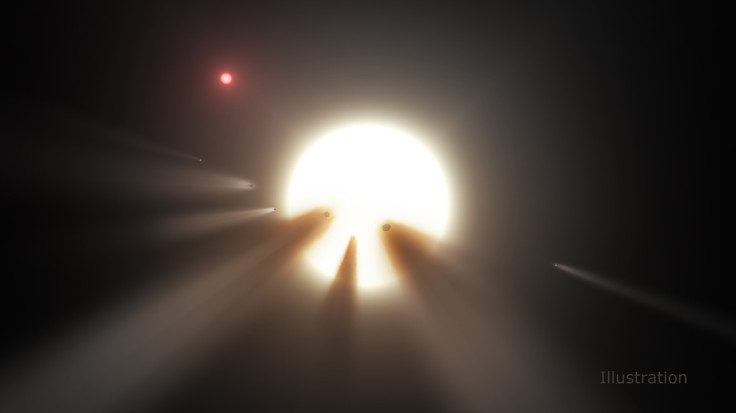‘Alien Megastructure’ Star Mystery Just Became A Lot Harder To Explain

Three months back, after conducting a detailed study of the star KIC 8462852, astronomers came to the conclusion that it was, unequivocally, “the most mysterious star in our galaxy.” Now, the star, whose bizarre behavior sparked speculation over existence of an alien civilization around it, is grabbing headlines once again.
First, some background. In September, a team of scientists led by Tabetha Boyajian from Yale University, who lends the object its informal name, the “Tabby’s star,” reported that the star was not behaving as it should. Based on observations conducted using NASA's Kepler Space Telescope between 2009 and 2013, the team witnessed two unusual incidents, in 2011 and 2013, when the star's light dimmed in dramatic, never-before-seen ways.
This dimming indicated that something had passed in front of the star — located between the constellations, Cygnus and Lyra. At the time, a swarm of comets was proposed as the most likely explanation.
However, this is not when Tabby’s star captured the public’s imagination. That happened a month later, in October, when Jason Wright, an astronomer from Penn State University, tossed out the idea that the swarm of objects around the star is “something you would expect an alien civilization to build.”
In other words, he suggested that the swarm may be an “alien megastructure,” or a giant Dyson sphere, built by a technologically advanced species to harness the star’s energy.
However, two independent searches, especially tailored to detect alien radio signals and laser pulses, didn’t yield any results, leaving only cometary fragments swarm theory as a possible explanation.
Now, in a new study released on the online pre-print server arXiv, astronomer Bradley Schaefer of Louisiana State University argues that even this does not explain the star’s weird behavior.
“The comet-family idea was reasonably put forth as the best of the proposals, even while acknowledging that they all were a poor lot,” Schaefer told the New Scientist magazine. “But now we have a refutation of the idea, and indeed, of all published ideas.”
The refutation comes from a painstaking study of photographic plates of the sky dating back to the late 19th century. During the study, Schaefer noted that the star also dimmed by about 20 percent between 1890 and 1989. For this to happen, Schaefer calculated that 648,000 comets, each 200 kilometers (124 miles) wide, would have had to pass in front of the star, all of them within the last century — a completely implausible event.
The latest observations indicate that the star has been getting slowly dimmer for about as long as humans have been watching the area of the sky that it is located in. This is not how stars like KIC 8462852, which is an F-type main sequence star, are expected to behave.
Unfortunately, in Schaefer’s opinion, this also rules out the idea of alien megastructures.
“The alien-megastructure idea runs wrong with my new observations,” he reportedly said, adding that even a technologically advanced alien civilization would not be capable of building something that would cover a fifth of a star in just a century.
“Either nature has found a hidden loophole, or hey, maybe there is a totally new idea,” Schaefer told CNN.
KIC 8462852, it seems, is not revealing its secrets anytime soon.
© Copyright IBTimes 2025. All rights reserved.






















